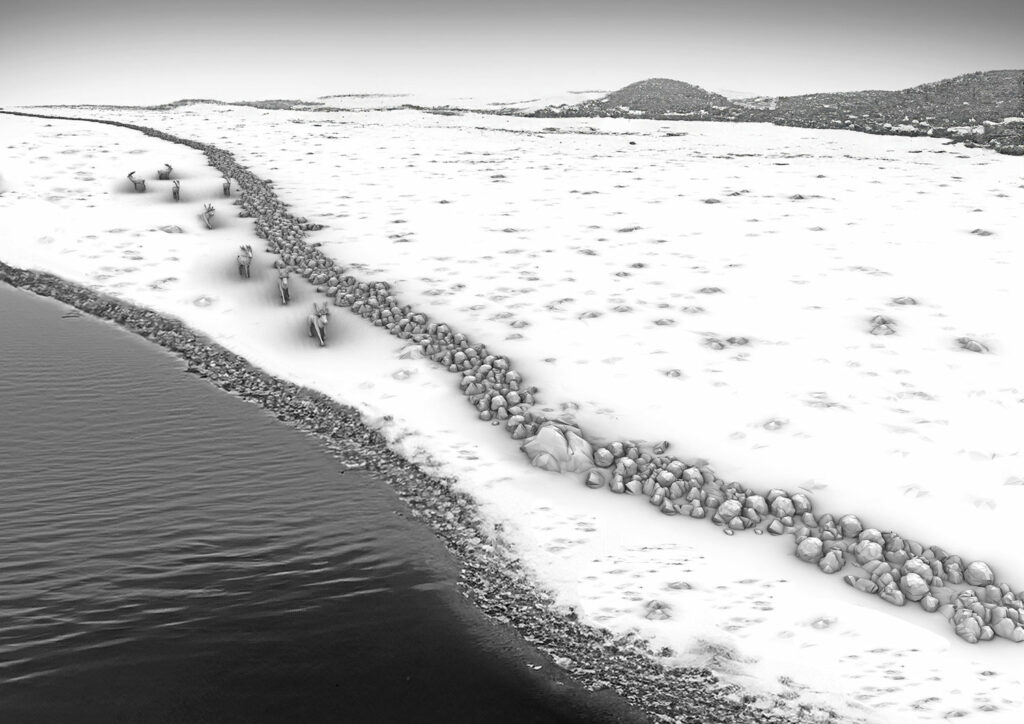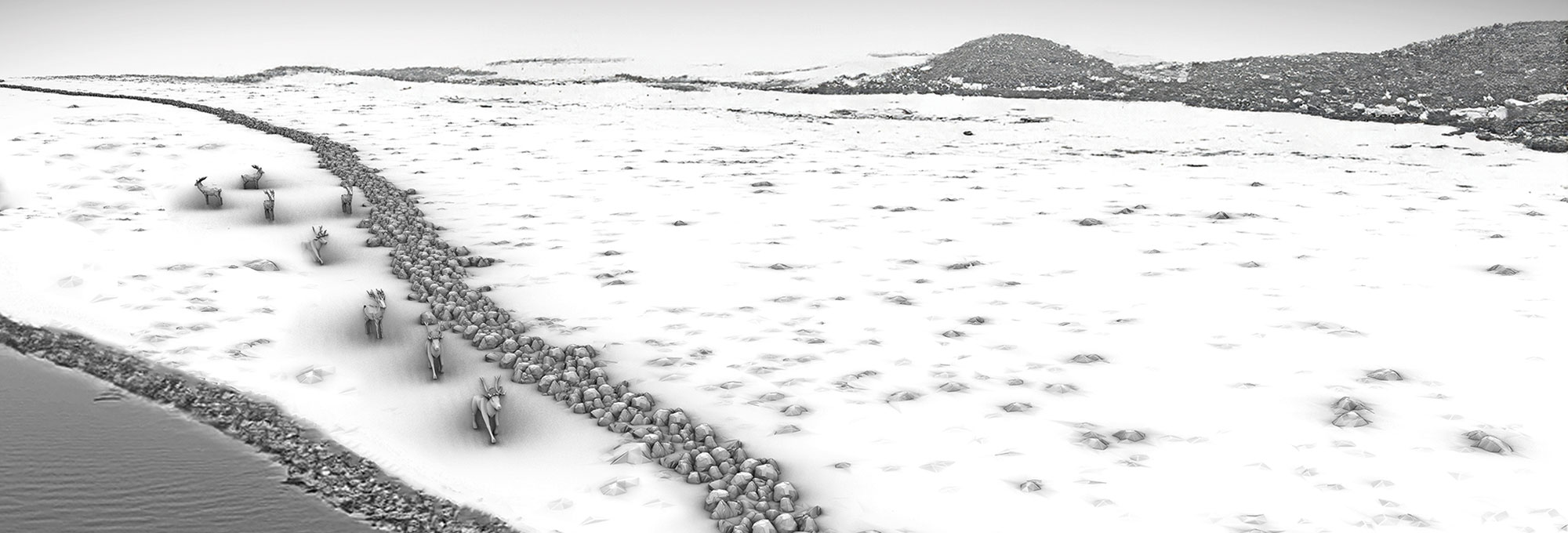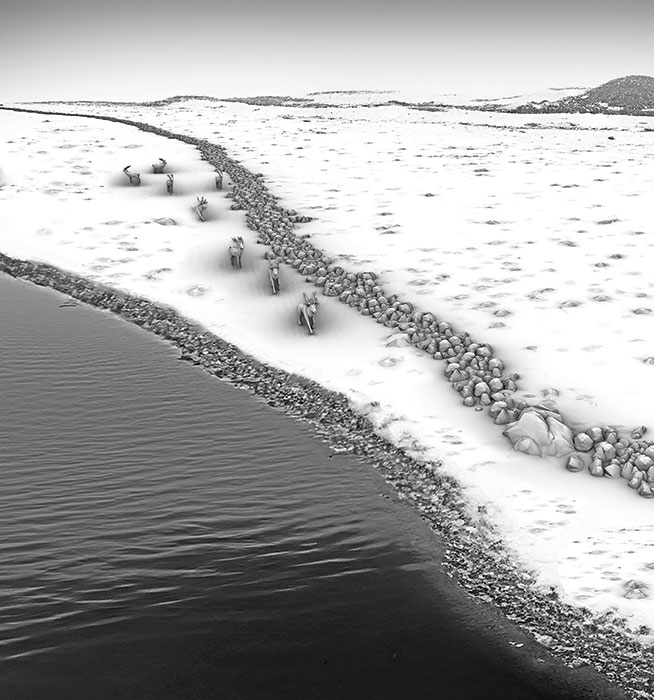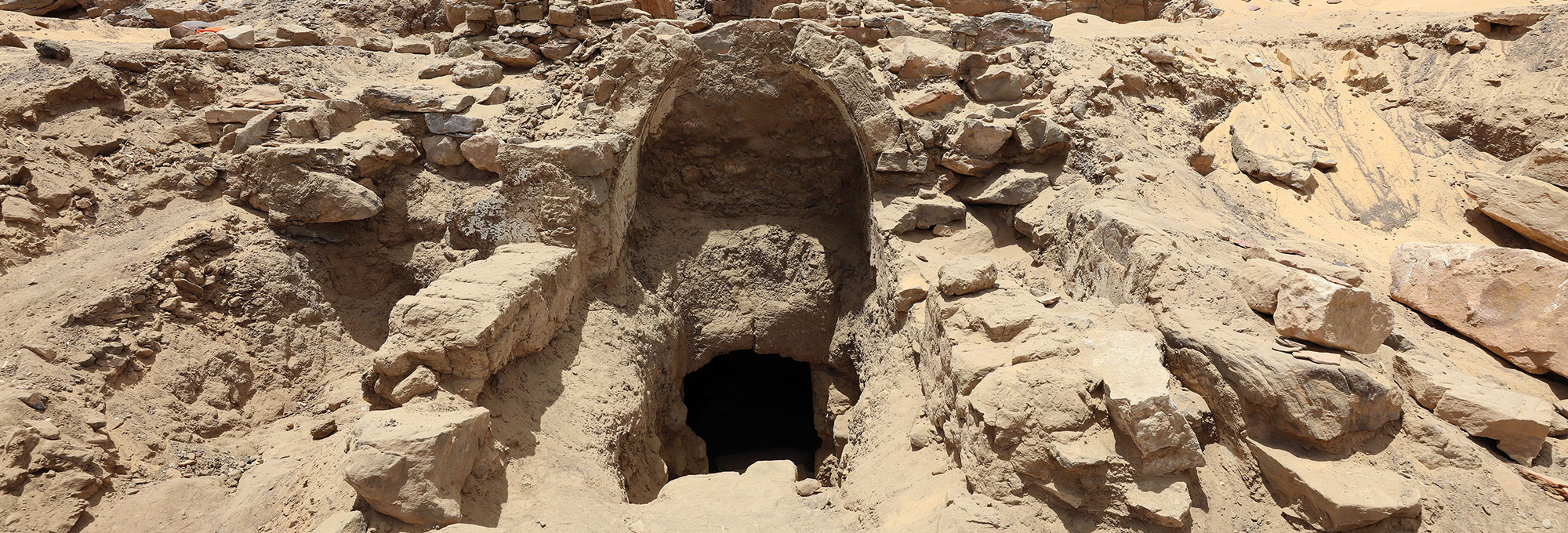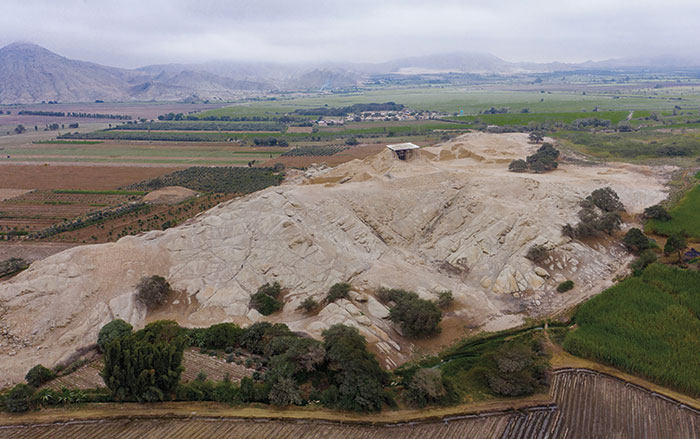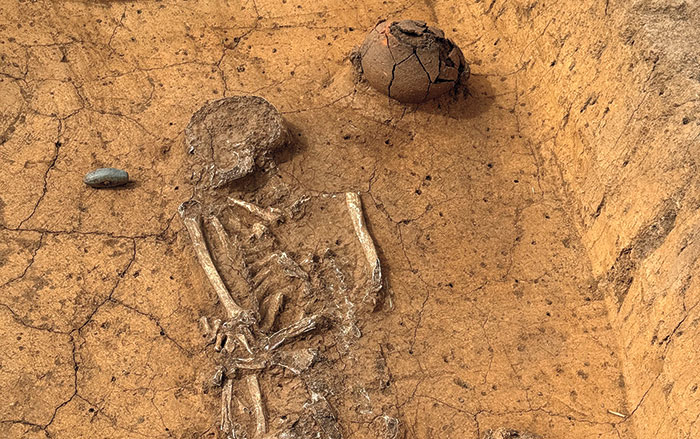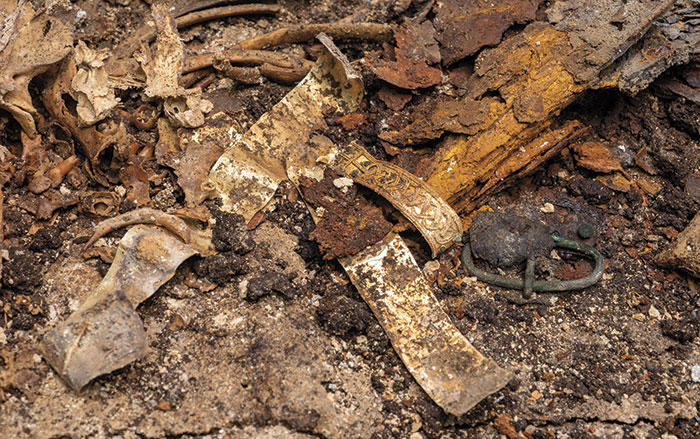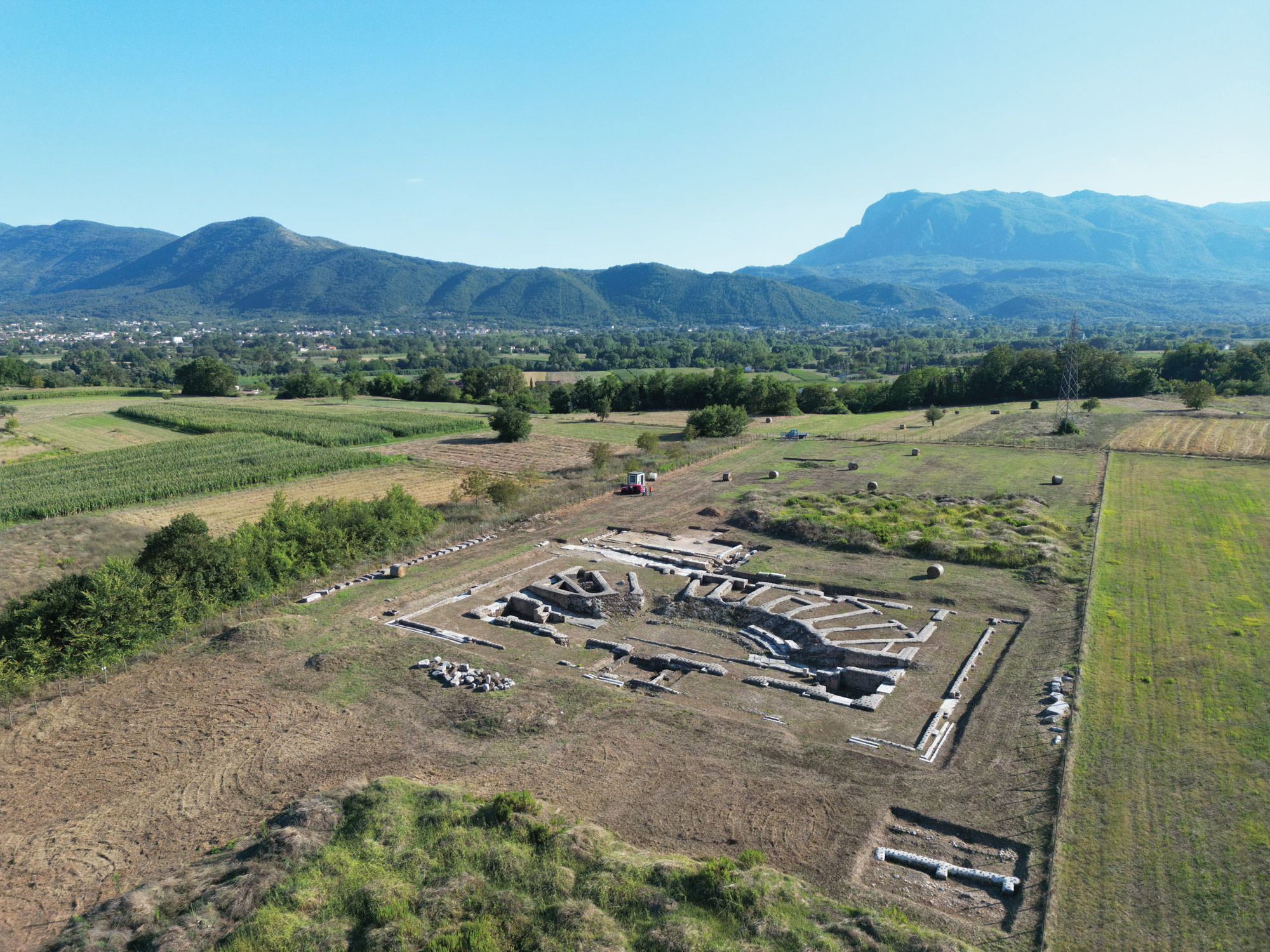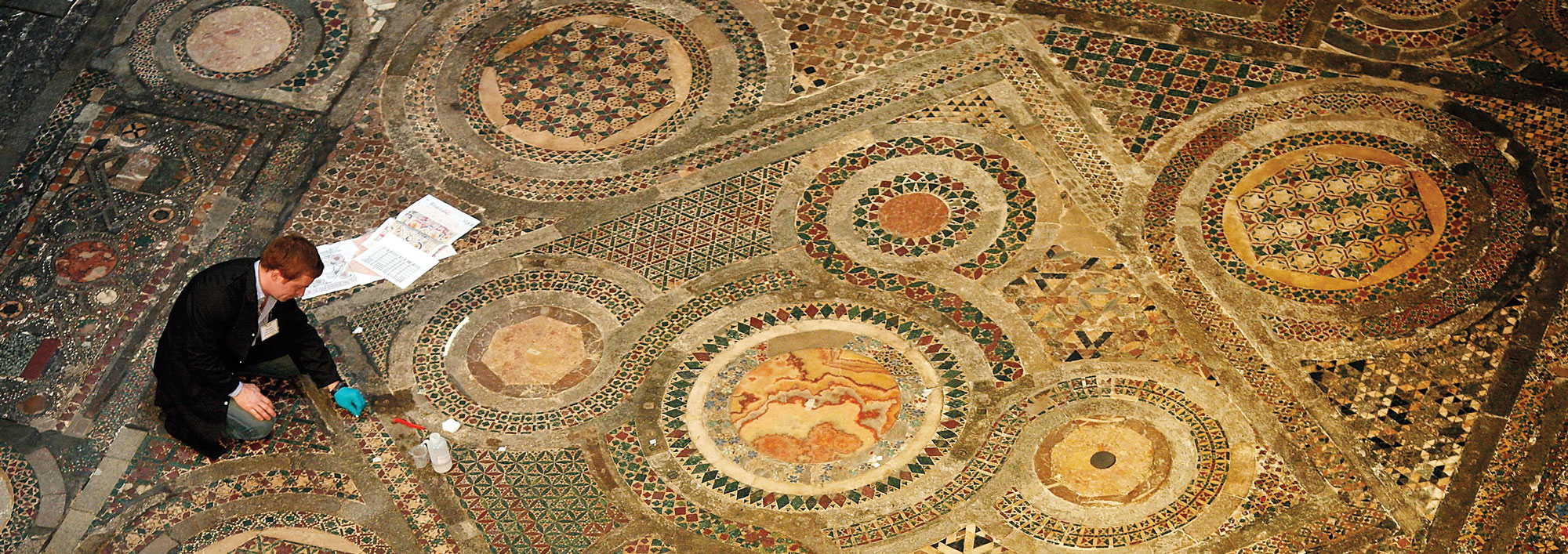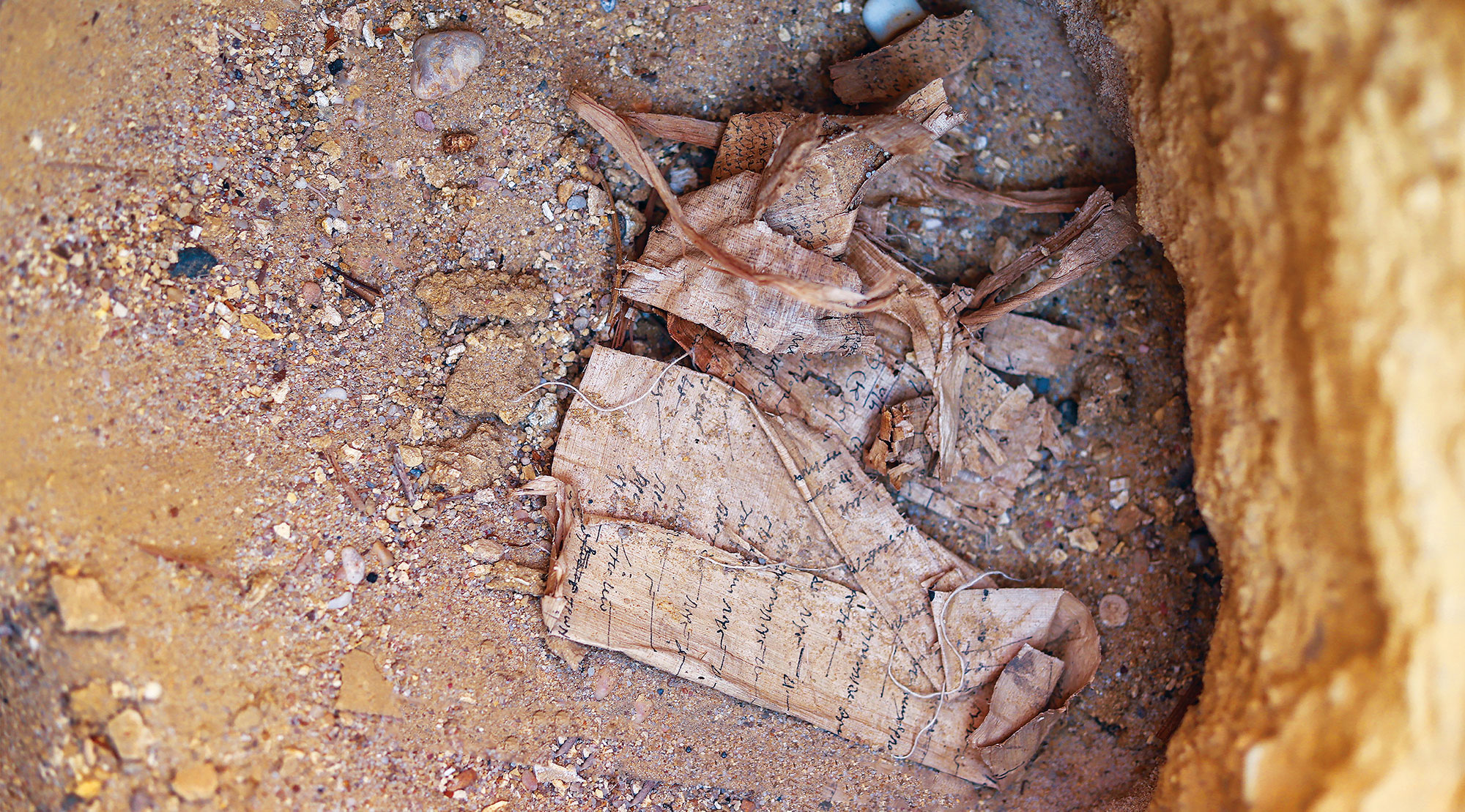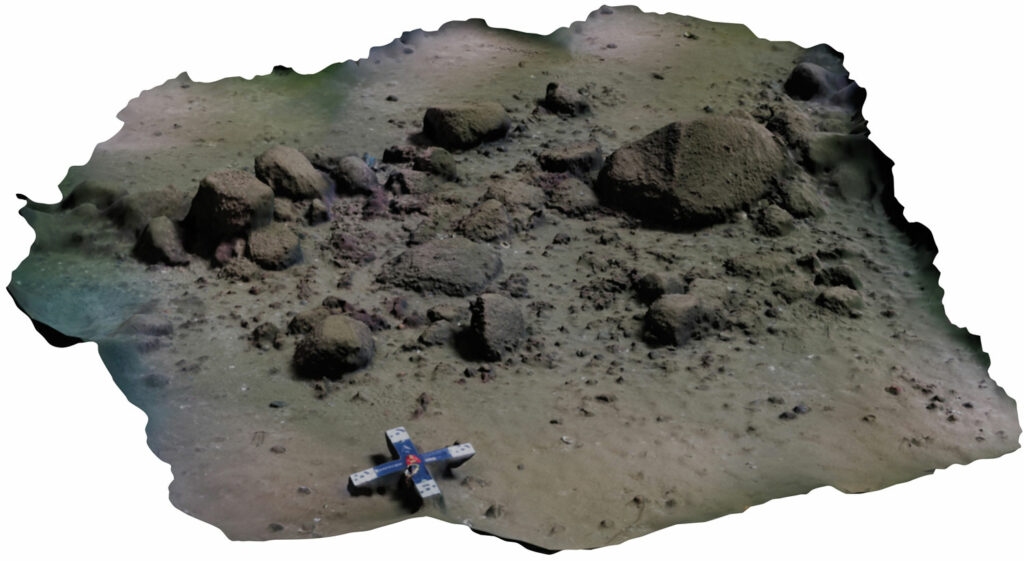
A stone wall that lies nearly 70 feet underwater and stretches for more than half a mile on the floor of the Baltic Sea some six miles off the German coast appears to be the oldest known structure in Europe built for hunting. The wall stands up to three feet tall and consists of more than 1,600 stones, the vast majority of which are small enough to have been carried and put in place by a single person. “The most likely hypothesis is that it is man-made,” says archaeologist Marcel Bradtmöller of the University of Rostock.
Until 8,500 years ago, when the area became submerged, the wall closely paralleled the northern edge of a lake or bog. This has led researchers to propose that large ungulates were herded into the narrow space between the wall and the lake, where they could be easily picked off by hunters lying in wait. The structure is thought to date to at least 10,000 years ago, during the Mesolithic period, when the only species of large ungulate living in the area—the Eurasian reindeer—moved northward as forests increasingly covered the region.
The wall appears to have been built thousands of years before the advent of agriculture and permanent settlement in the region. Thus, the people who built it must have been hunter-gatherers who roamed the area after the end of the last Ice Age. According to Bradtmöller, little is known about these people, but the existence of the structure suggests that there were connections among bands of hunter-gatherers. “This may have served as something like a fixed point in the landscape where people could gather every year or two in a bigger group,” he says. Bradtmöller adds that the discovery points to the potential for additional finds deep in the Baltic Sea, where it was previously thought that evidence of human activity either had not been preserved or had been buried under thick layers of sediment.
